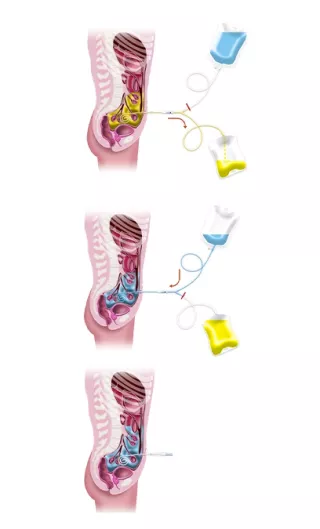
How Peritoneal Dialysis (PD) Works
The PD exchange procedure
In this section, you will learn how PD works.
PD is carried out through a catheter placed in the peritoneum, which is located in your abdomen. This is where you exchange old solution for new solution. The 3 main steps in fluid exchange for PD are drain, fill, and dwell.
Continuous ambulatory peritoneal dialysis (CAPD)
CAPD is a manual form of PD. CAPD means that you “manually exchange” old solution for new solution multiple times every day. Dialysis happens continuously.
The catheter
The catheter is a small, flexible tube that is placed through the wall of your abdomen, into the peritoneal cavity. It is a permanent access for PD that is essential. The PD catheter lets the PD solution run into and out of your peritoneal cavity.
Your renal care team will show you how to take care of your PD catheter.
Automated peritoneal dialysis (APD)
APD is a form of PD done with the assistance of a machine. The machine is mostly referred to as a “cycler.”
The cycler does the exchange. This is usually done at night, while you sleep, allowing you to carry on your daily activities without interruption. Your nurse will advise you if you need an extra exchange during the day.
Key points to remember:
• Your nurse will walk you through the steps needed to do PD at home.
• Feel free to take notes and ask your nurse questions throughout your training.
• It is important for you to be comfortable with this information.
• Be actively involved in the learning process.
• As you continue your training, you will gain confidence to perform your therapy at home.
• Both CAPD and APD can be planned to fit into your family, work, and personal lifestyle.
• Know that you are an important part of your renal team.









